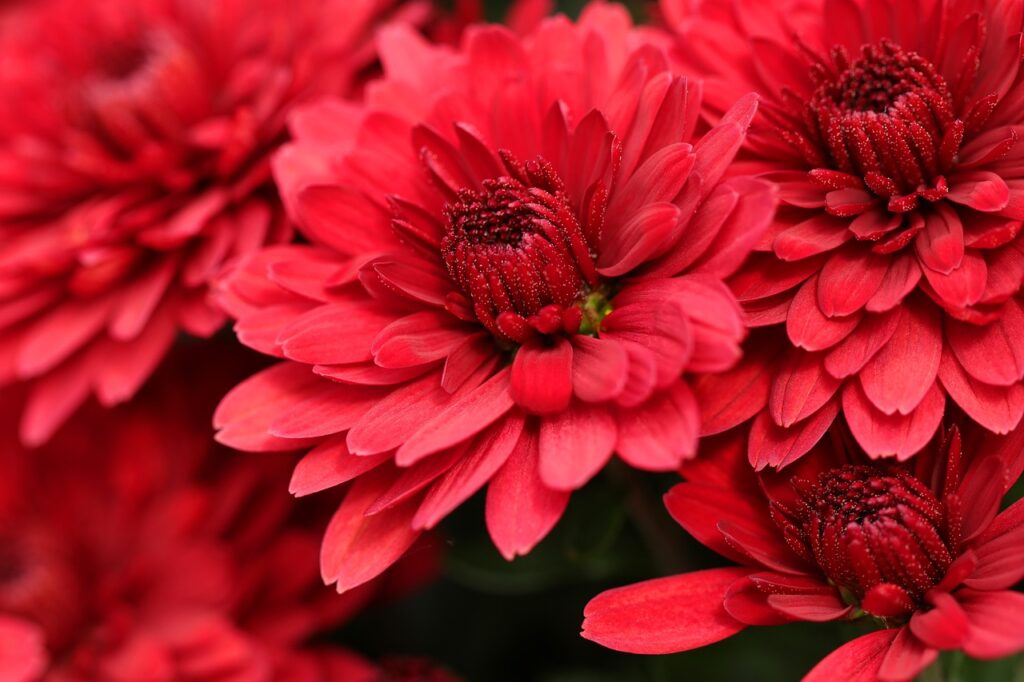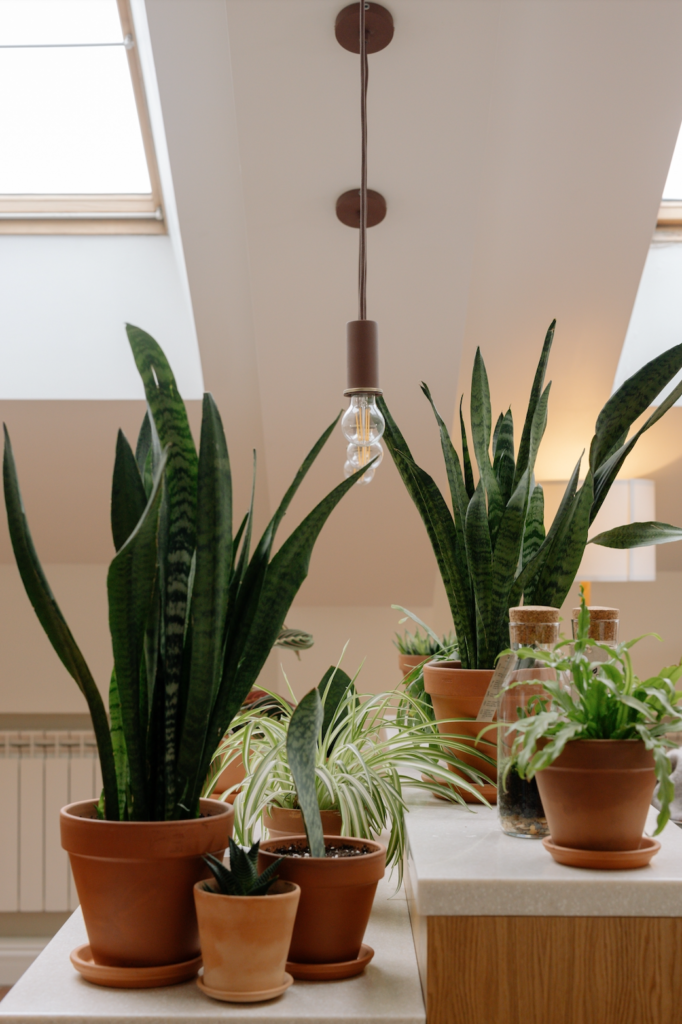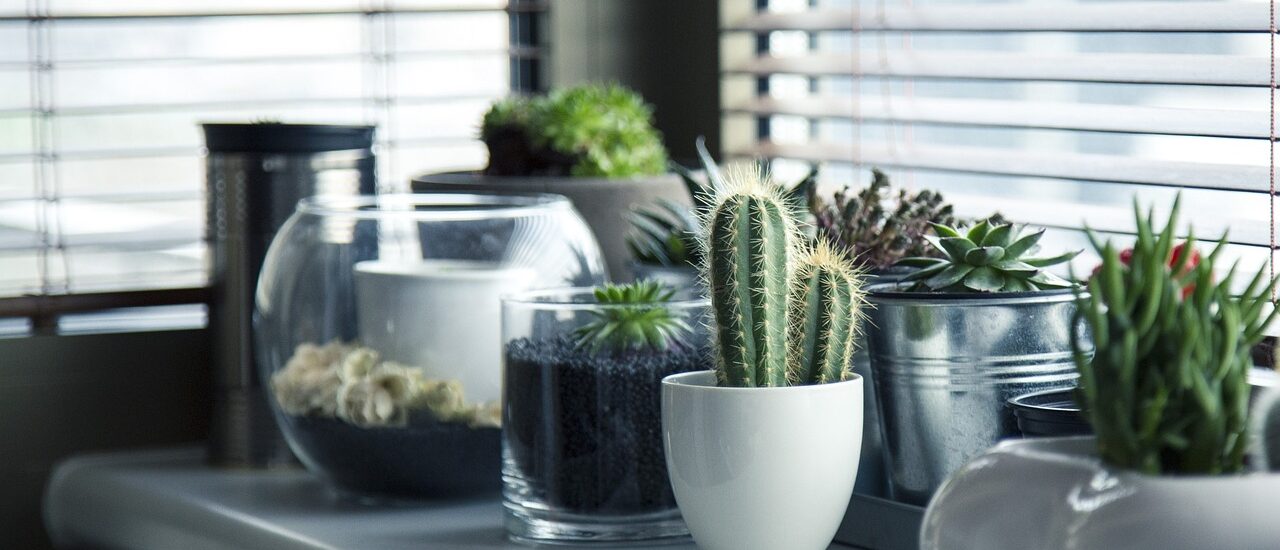You finally finished renovating your home. The walls are painted, the furniture is placed flawlessly around your space, and everything seems almost perfect… there’s just one thing missing. Vegetation.
According to the American Time Use Survey, in 2019, half of Americans spent 50% of their waking hours at their home, and during covid in 2020, that number had jumped to 62% meaning we spent more than half our time in the spaces in which we reside. This is significant to consider as our environment can play a large role in our behaviours and how we function. Plants can provide many benefits to humans including boosting your mood, productivity, creativity, and concentration, reducing stress, and eliminating air pollutants. Hopefully, that’s enough of a reason to head over to your local floral shop and pick up a few plants. There are plants which can serve different functions, while some may need low-maintenance care, others just may be used for aesthetics. In this blog, I will present a list of 5 houseplants that are good for beginners, purify the air in your home and therefore make you feel more alive.
Note: The list is not placed in any specific order
1. Chrysanthemums (Chrysanthemum morifolium)

Chrysanthemums, also referred to as “mums” are easy to grow, and provide great air circulation. They also come in a variety of shapes and colours such as white, yellow, orange, red and lavender. Their height in growth can range from 1-3 feet while their spread can grow from 1-2 feet and bloom from late summer to fall.
Care: To care for Chrysanthemums, they do need full sunlight during the growing season. For the soil, it is important to provide them with rich, well-drained soil. They do grow during the summer at high heated temperatures so it is important to maintain frequent watering because of their shallow root system.
Note: It is important to note that Chrysanthemums are toxic to cats, dogs, and other animals, and therefore should be placed in areas away from pets’ reach.
2. Dracaenas

If plant care is not for you Dracaenas may be. These plants are low maintenance and can withstand a variety of growing conditions. On top of this, they are one of the most effective houseplants for removing pollutants from the air. Dracaenas flowers are white but the foliage (leaves) can vary from green/blue, grey/silver, purple/burgundy, and gold/chartreuse. Their height can range from 1 to 3 feet while their spread ranges from 1 to 20 feet.
Care: To care for Dracaenas, the amount of light required is flexible. Dracaenas will survive in either dimly lit areas or brighter lit areas that provide part sun. If constantly exposed to full sun, the foliage may burn. For the soil, it is important to provide well-drained soil that is dry to the touch between waterings. Overwatering and soggy soil can damage the plant.
Note: It is important to note that Dracaenas do contain toxic substances to cats, dogs, and other animals, and therefore should be placed in areas away from pets’ reach.
3. Golden Pothos (Epipremnum aureum)

Golden Pothos is another common house plant which requires basic care and can be adaptable to many environments. The Golden Pothos is a tropical vine with heart-shaped green leaves producing gold/yellow and purple/lavender coloured flowers. They grow anywhere from 20-40 feet long to 3-6 feet wide.
Care: Pothos will live well in a variety of different environments. They can be exposed to both full sun and partial shade. The soil for the plant can be either dry or rocky and when watering it is good to wait until the soil dries out completely before watering again.
Note: It is important to note that Golden Pothos do contain toxic substances to cats, dogs, and other animals, and therefore should be placed in areas away from pets’ reach.
4. Areca Palms (Chrysalidocarpus lutescens)

The Areva Palms are tall, clumping palms with smooth trunks that can sometimes be golden. They are grown both indoors and outdoors and have a slow to moderate growth rate. The flower colour produced is a pale yellow. They can grow from 12-30 feet tall outdoors with a spread of 10-20 feet or 8 feet tall indoors. They are native to Madagascar but are now considered an endangered species in their native land.
Care: To care for Areca palms it is important to allow them full to partial sun exposure. The soil should be moist and well-drained. When watering make sure the soil is slightly dried out before watering again as they are sensitive to overwatering. It is also good to note that they are sensitive to fluoridated water and therefore should be given distilled or collected rainwater. As this plant originates from a tropical area it is important to keep it in temperatures of an average of 65-75 degrees Fahrenheit and away from cold windows, air conditioners or heat sources.
5. Spider Plants (Chlorophytum comosum)

One of the most common houseplants to grow are spider plants which are a great start for beginner plant owners. They grow leaves that are green or stripped green and white with a white flower. At its mature size, the spider plant can grow up to 1-2 feet tall and wide. They are moderately fast-growing plants and can be planted at any time of year.
Care: Caring for spider plants requires indirect sunlight exposure such as by a bright window or patio door. When outdoors they should be placed in light shade as direct sunlight exposure can burn the leaves. They are capable of growing in different soil types though it is recommended to use loamy soil with sharp drainage. When watering spider plants it is important to keep them lightly moist but avoid over-watering as it can kill the plant. It is a good idea to keep these plants in warm and humid conditions.
These are just a list of 5 houseplants that can be both easy to care for and work well for purifying indoor air pollutants. Adding a few plants in your space can be a great way to enlighten the room and bring life from the outdoors to the indoors.
Sources:
Garden Design Magazine. (2022, October 5). Chrysanthemums: Growing, Care, & Design Tips. GardenDesign.com. https://www.gardendesign.com/flowers/mums.html
Iannotti, M., & Jones, A. (2023, April 3). How to Grow and Care For Pothos. The Spruce. https://www.thespruce.com/pothos-an-easy-to-grow-houseplant-1403154
Neveln, V. (2023, May 1). How to Grow and Care For Dracaena. Better Homes & Gardens. https://www.bhg.com/gardening/plant-dictionary/houseplant/dracaena/#toc-dracaena-care-tips
Riley, E. (2018, September 18). The Best Air-Purifying Plants For Your Home. Healthline. https://www.healthline.com/health/air-purifying-plants#extracare-plants
The Sill. (2022, January 7). The Benefits of House Plants. The Sill. https://www.thesill.com/blog/why-you-need-plants-in-your-life
Vanzile, J. (2022, May 3). How to Grow and Care for Areca Palm. The Spruce. https://www.thespruce.com/grow-areca-palms-indoors-1902876
VanZile, J. (2022, April 20). How to Grow and Care for Spider Plant. The Spruce. https://www.thespruce.com/spider-plants-chlorophytum-definition-1902773
Yau, N. (2021, September 3). How much more time we spent at home. FlowingData. https://flowingdata.com/2021/09/03/everything-more-from-home/




